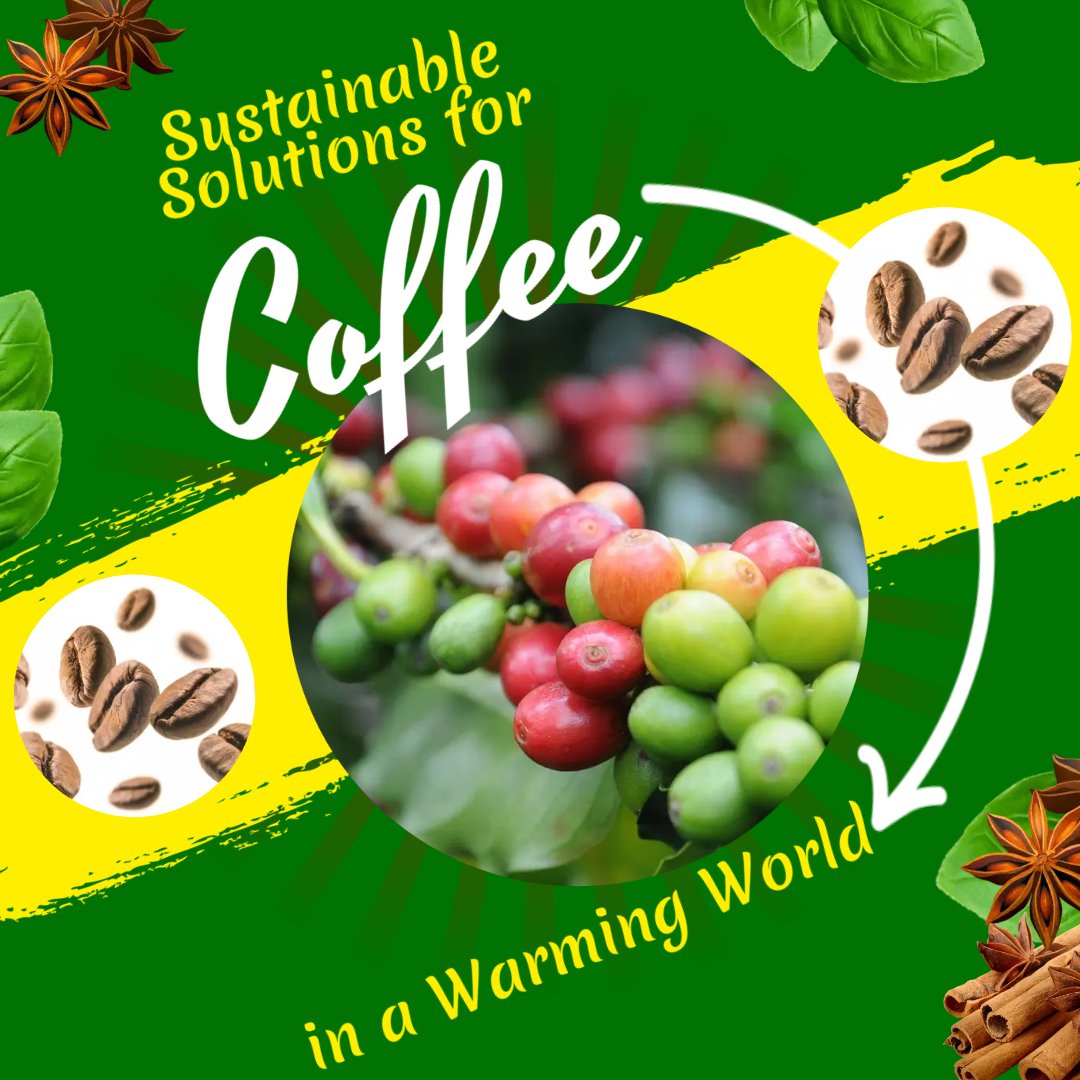A Look at Sustainable Solutions for Coffee in a Warming World

In the hustle and bustle of daily life, caffeine serves as the universal catalyst that jump-starts our mornings, with coffee being the preferred vessel for this beloved stimulant. Cultivated across more than 70 nations, coffee holds a prominent place in our lives, supporting the livelihoods of approximately 125 million people globally. However, the warming climate threatens this vital commodity, prompting the need for innovative solutions to safeguard our morning cup of coffee.
As reported by “THE Economist,” the escalating temperatures and shifting rainfall patterns in key coffee-producing regions of South America, central Africa, and South-East Asia pose a significant threat to the industry. According to a recent study by Cássia Gabriele Dias from the Federal University of Itajubá in Brazil, between 35% and 75% of Brazil’s coffee-growing land may become unusable by the end of the century.
Acknowledging the severity of this issue, the global coffee community is now faced with the challenge of implementing Climate-Smart Policies and Investments to ensure the industry’s sustainability. Drawing from our extensive review of previous global changes in the coffee industry, we delve into creative approaches that can transform the coffee landscape.
Climate-Smart Solutions for Coffee Farms
One intriguing option is to shift coffee cultivation uphill, capitalizing on the natural temperature decrease with altitude. Tanzania, for instance, boasts areas 150 to 200 meters above current coffee-growing zones, presenting an opportunity for continued coffee farming. However, this approach introduces challenges such as steeper slopes, shallower soils, and potential conflicts with climate pledges.
An alternative strategy involves revisiting traditional “agroforestry” techniques, as highlighted by Nicholas Girkin, an environmental scientist at the University of Nottingham. Historically, coffee plants thrived in the shade beneath taller trees, offering protection against scorching temperatures. Recent studies indicate that these agroforestry practices not only enhance the flavor and size of coffee beans but also promote biodiversity, with trees acting as havens for beneficial predators and pollinators.
While agroforestry presents a viable short-term solution, it has its limitations. Climate models project that in many regions, temperatures may eventually surpass the tolerance levels of the sensitive Arabica plant. This necessitates a more profound transformation in the coffee industry—a change in the very nature of the coffee bean itself.
READ: 72 Kenyan Coffee Factories to be Upgraded through Coffee Revitalization Program
Rediscovering Forgotten Gems: Diverse Coffee Species for a Changing Climate
In the pursuit of a resilient coffee plant, scientists are revisiting overlooked coffee species that flourished in warmer or drier environments. Botanist Aaron Davis, from the Royal Botanic Gardens, Kew, has dedicated his efforts to exploring forgotten varieties such as Coffea stenophylla and Coffea affinis. These species, found in Sierra Leone, exhibit promising traits, hinting at their ability to withstand higher temperatures compared to Arabica and Robusta.
Research indicates that C. stenophylla boasts a fruitier profile and better acidity than Brazilian Arabica, offering a potential replacement for the vulnerable species. Additionally, Coffea dewevrei, known as Excelsa, emerges as an attractive option due to its heat tolerance, high yield, and resistance to the coffee-rust fungus.
Genetic Engineering and Cross-Breeding
Recognizing the urgency of the situation, researchers are exploring a combination of genetic engineering and cross-breeding to transfer desirable traits from these resilient species into Arabica. Dr. Davis, involved in comprehensive Arabica genome research, aims to facilitate this transformative process. However, the timeline for commercial use of a new coffee cultivar remains a decade or more.
In the interim, agricultural engineer Dr. Dias emphasizes the need for immediate measures, urging coffee-producing nations like Brazil to adopt a dual strategy—moving some farms uphill while incorporating agroforestry practices. This strategic approach can provide a temporary buffer, allowing scientists the time required to develop a coffee plant capable of thriving in a warmer world.
In summary, the future of our morning cup of coffee lies in the hands of innovative solutions, blending traditional wisdom with cutting-edge technology. As we navigate the challenges posed by climate change, the global coffee community must unite in its commitment to sustainable practices, ensuring the longevity of this cherished beverage.



